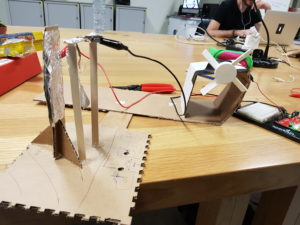For this project, I decided to build a maze that activated the LED light when the ball reached the end of the maze.
I started by building the maze out of a cardboard box:
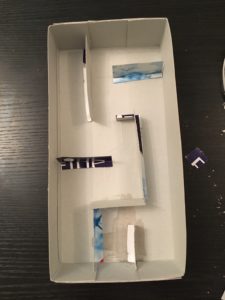
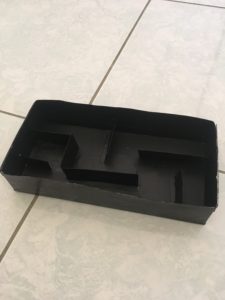
I then needed to figure out how I would be able to get two pieces of aluminum foil to hit into each other. At first, I thought I would be able to get the ball to hit into one standing piece of aluminum foil so that it would then hit the next piece of aluminum, where the contact of the two pieces would serve as a switch and activate the light. However, I couldn’t manage to find a way to do that while also having the aluminum attached to the wires because I was thinking of the contact like having a dominos effect.
I then decided to try and see whether I could have the ball be the medium of contact by covering it in aluminum and then having it touch a piece of aluminum at the end of the maze which would activate the switch. Again, the issue of wires came up, where having the wire attached to the ball wasn’t feasible and would get in the way of the game.
I then decided that perhaps the best was to have the ball press down on a piece of aluminum to achieve contact. I decided to test whether putting two pieces of cardboard (covered in aluminum) in a sea-saw shape would be able to work. It managed to work and so I then tested whether the balls weight was enough to push down the top piece of cardboard. This idea worked! I then glued the bottom piece of aluminum to the end of the maze, and connected the wires through the sides of the cardboard.
Here are some pictures of the final product:
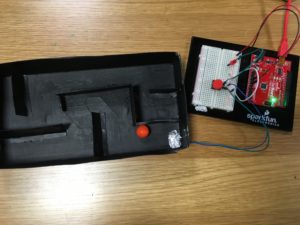
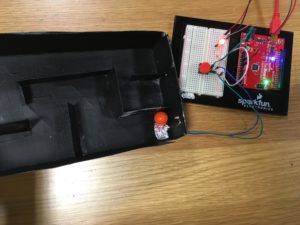

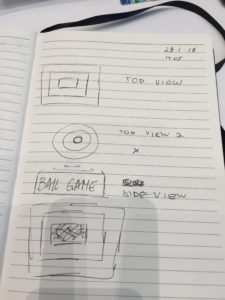 There were a couple of designs that I thought of. One of the ideas consisted of circles but I decided against it because it would logistically be a hassle. Using a square or rectangle would work just as well and without the trouble.
There were a couple of designs that I thought of. One of the ideas consisted of circles but I decided against it because it would logistically be a hassle. Using a square or rectangle would work just as well and without the trouble.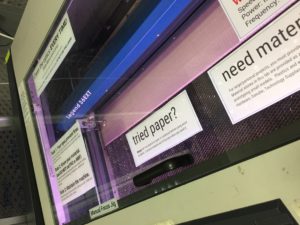
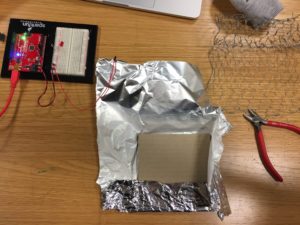 After making sure the LED turns on, I cut and taped some wire to both the aluminum and chicken wire. I put all of the parts together using hot glue.
After making sure the LED turns on, I cut and taped some wire to both the aluminum and chicken wire. I put all of the parts together using hot glue.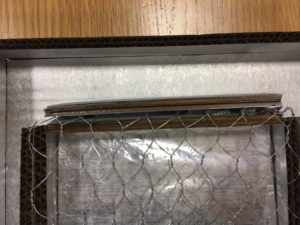
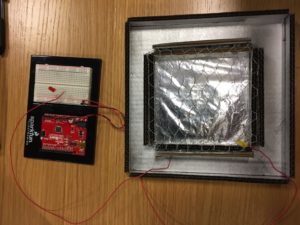
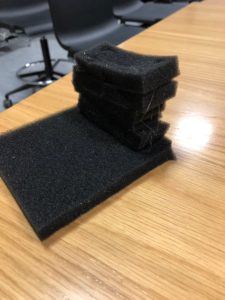


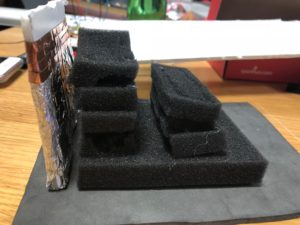
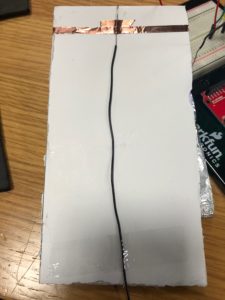
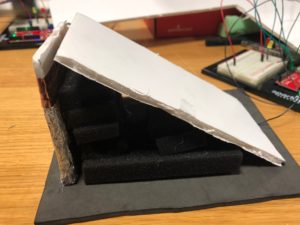


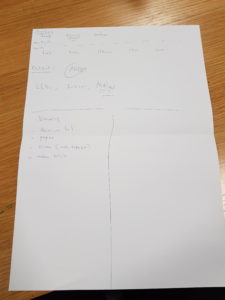
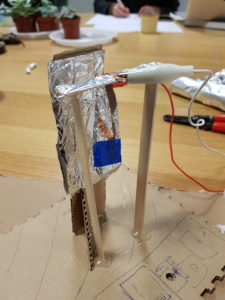
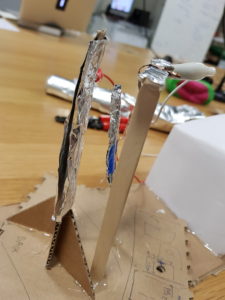 You blow on the hanging piece of cardboard wrapped in foil, and it’ll make contact with the stationary piece of cardboard wrapped in foil. In order to not make the hanging piece of cardboard hefty, the current is transferred through copper tape to the top wooden stick, also wrapped in foil, where the alligator clips connects this piece to the rest of the circuit.
You blow on the hanging piece of cardboard wrapped in foil, and it’ll make contact with the stationary piece of cardboard wrapped in foil. In order to not make the hanging piece of cardboard hefty, the current is transferred through copper tape to the top wooden stick, also wrapped in foil, where the alligator clips connects this piece to the rest of the circuit.